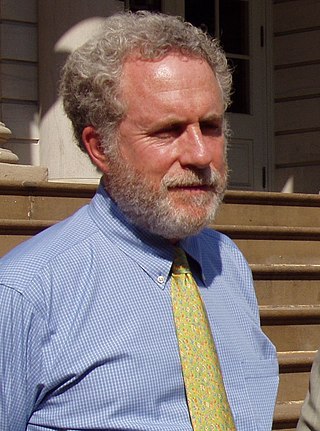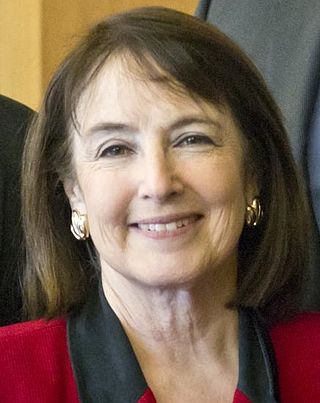An expert witness, particularly in common law countries such as the United Kingdom, Australia, and the United States, is a person whose opinion by virtue of education, training, certification, skills or experience, is accepted by the judge as an expert. The judge may consider the witness's specialized opinion about evidence or about facts before the court within the expert's area of expertise, to be referred to as an "expert opinion". Expert witnesses may also deliver "expert evidence" within the area of their expertise. Their testimony may be rebutted by testimony from other experts or by other evidence or facts.
The value of life is an economic value used to quantify the benefit of avoiding a fatality. It is also referred to as the cost of life, value of preventing a fatality (VPF), implied cost of averting a fatality (ICAF), and value of a statistical life (VSL). In social and political sciences, it is the marginal cost of death prevention in a certain class of circumstances. In many studies the value also includes the quality of life, the expected life time remaining, as well as the earning potential of a given person especially for an after-the-fact payment in a wrongful death claim lawsuit.
Medical malpractice is professional negligence by act or omission by a health care provider in which the treatment provided falls below the accepted standard of practice in the medical community and causes injury or death to the patient, with most cases involving medical error. Claims of medical malpractice, when pursued in US courts, are processed as civil torts. Sometimes an act of medical malpractice will also constitute a criminal act, as in the case of the death of Michael Jackson.
Contingent valuation is a survey-based economic technique for the valuation of non-market resources, such as environmental preservation or the impact of externalities like pollution. While these resources do give people utility, certain aspects of them do not have a market price as they are not directly sold – for example, people receive benefit from a beautiful view of a mountain, but it would be tough to value using price-based models. Contingent valuation surveys are one technique which is used to measure these aspects. Contingent valuation is often referred to as a stated preference model, in contrast to a price-based revealed preference model. Both models are utility-based. Typically the survey asks how much money people would be willing to pay to maintain the existence of an environmental feature, such as biodiversity.
In United States federal law, the Daubert standard is a rule of evidence regarding the admissibility of expert witness testimony. A party may raise a Daubert motion, a special motion in limine raised before or during trial, to exclude the presentation of unqualified evidence to the jury. The Daubert trilogy are the three United States Supreme Court cases that articulated the Daubert standard:
Crawford v. Washington, 541 U.S. 36 (2004), is a landmark United States Supreme Court decision that reformulated the standard for determining when the admission of hearsay statements in criminal cases is permitted under the Confrontation Clause of the Sixth Amendment. The Court held that prior testimonial statements of witnesses who have since become unavailable may not be admitted without cross-examination.
Daubert v. Merrell Dow Pharmaceuticals, Inc., 509 U.S. 579 (1993), is a United States Supreme Court case determining the standard for admitting expert testimony in federal courts. In Daubert, the Court held that the enactment of the Federal Rules of Evidence implicitly overturned the Frye standard; the standard that the Court articulated is referred to as the Daubert standard.
Admissible evidence, in a court of law, is any testimonial, documentary, or tangible evidence that may be introduced to a factfinder—usually a judge or jury—to establish or to bolster a point put forth by a party to the proceeding. For evidence to be admissible, it must be relevant and "not excluded by the rules of evidence", which generally means that it must not be unfairly prejudicial, and it must have some indicia of reliability. The general rule in evidence is that all relevant evidence is admissible and all irrelevant evidence is inadmissible, though some countries proscribe the prosecution from exploiting evidence obtained in violation of constitutional law, thereby rendering relevant evidence inadmissible. This rule of evidence is called the exclusionary rule. In the United States, this was effectuated federally in 1914 under the Supreme Court case Weeks v. United States and incorporated against the states in 1961 in the case Mapp v. Ohio. Both of these cases involved law enforcement conducting warrantless searches of the petitioners' homes, with incriminating evidence being described inside them. Consciousness of guilt is admissible evidence.
Randall Dale Adams was an American man wrongfully convicted of murder and sentenced to death after the 1976 shooting of Dallas police officer Robert W. Wood. His conviction was overturned in 1989.

Peter J. Neufeld is an American attorney, co-founder, with Barry Scheck of the Innocence Project, and a founding partner in the civil rights law firm Neufeld Scheck & Brustin. Starting from his earliest years as an attorney representing clients at New York's Legal Aid Society, and teaching trial advocacy at Fordham School of Law from 1988 to 1991, he has focused on civil rights and the intersection of science and criminal justice.
Kumho Tire Co. v. Carmichael, 526 U.S. 137 (1999), is a United States Supreme Court case that applied the Daubert standard to expert testimony from non-scientists.

R v Mohan, 1994 CanLII 80, [1994] 2 SCR 9 is a leading Supreme Court of Canada decision on the use of expert witnesses in trial testimony.
In United States law, the Frye standard, Frye test, or general acceptance test is a judicial test used in some U.S. state courts to determine the admissibility of scientific evidence. It provides that expert opinion based on a scientific technique is admissible only when the technique is generally accepted as reliable in the relevant scientific community. In Daubert v. Merrell Dow Pharmaceuticals, 509 U.S. 579 (1993), the U.S. Supreme Court held that the Federal Rules of Evidence superseded Frye as the standard for admissibility of expert evidence in federal courts. Some states, however, still adhere to the Frye standard.

Nancy Gertner is a former United States district judge of the United States District Court for the District of Massachusetts. She assumed senior status on May 22, 2011, and retired outright from the federal bench on September 1, 2011. She is now a professor of practice at Harvard Law School.
Stan V. Smith is an American economist credited with coining the term and creating the arguments behind the hedonic damages theory, which entered mainstream legal economics in the 1985 court case Sherrod v. Berry. He often presents, publishes, and speaks on economics. He is now president of a national litigation support firm, Smith Economics Group, Ltd., and acts as an expert witness in court cases involving economic damages, from commercial to personal injury damages, including cases where it can be argued the quality of someone's life has been diminished or lost. His economic theories on victim restitution in child pornography in one of his cases that reached the Supreme Court resulted in the Amy Vicky Andy Act signed by President Trump in 2018.
Hedonology (Hedonics), is the study of the impact an injury or incident had on a person's lifestyle.

The California Innocence Project is a non-profit based at California Western School of Law in San Diego, California, United States, which provides pro bono legal services to individuals who maintain their factual innocence of crime(s) for which they have been convicted. It is an independent chapter of the Innocence Project. Its mission is to exonerate wrongly convicted inmates through the use of DNA and other evidences.
Ajaxo Inc. v. E*Trade Financial Corp., 187 Cal.App.4th 1295 (2010), is the second appeal on a dispute dated back to 1999. During the original 2000 case, defendant E*Trade, an online financial services company, was found liable for maliciously and willfully misappropriating trade secrets pertaining to wireless stock trading technology acquired from the plaintiff, Ajaxo. Under the Uniform Trade Secrets Act E*Trade was required under a mutually signed Non-disclosure agreement (NDA) to keep Ajaxo's trade secrets confidential. After a jury trial in 2003, E*Trade was fined $1.3 million to be paid to Ajaxo for the misappropriation and breach of NDA. The court denied Ajaxo's request for additional damages. All parties appealed. In 2005 the California courts of appeal affirmed the original ruling but remanded the case back to the trial court to determine additional damages. A jury verdict in 2008 rejected claims raised and demands for royalty damages from Ajaxo. In trade secret cases it is common for a plaintiff to seek royalty damages when they are unable to show an actual loss or that the defendant received some inequitable benefit from the misappropriation. In this case the court refused to allow evidence of royalty damages, claiming there were no net damages. Ajaxo appealed. In 2010 the California courts of appeal once again remanded the case back to the trial court reasoning that in such cases an exact quantitative measure of wrongful enrichment damages incurred by the plaintiff might not be sufficient to reject the claim of reasonable royalties based damages

Anthony Ray Hinton is an American activist, writer, and author who was wrongly convicted of the 1985 murders of two fast food restaurant managers in Birmingham, Alabama. Hinton was sentenced to death and held on the state's death row for 28 years before his 2015 release.




